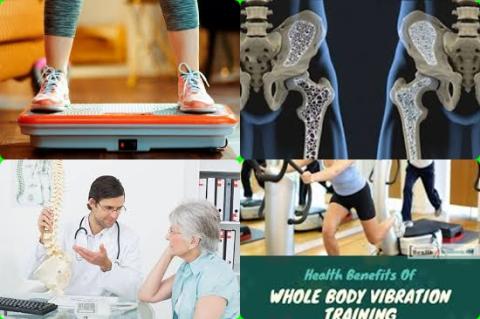
Objectives:
Which types of exercise training (whole body vibration training, aerobic training, strength training and combined training) increase lumbar spine and femoral neck bone mineral density (BMD) in older postmenopausal women (PMW)?
Study design:
This review article included 16 RCTs with 1,624 subjects.
Results and conclusions:
The investigators found no significant change in lumbar spine bone mineral density following exercise training [MD = 0.01 g/cm2, 95% CI = -0.01 to 0.02].
The investigators found no significant change in femoral neck bone mineral density following exercise training [MD = 0.00 g/cm2, 95% CI = -0.01 to 0.01].
The investigators found, however, subgroup analysis by type of exercise training revealed that lumbar spine bone mineral density [MD = 0.01, 95% CI = 0.00 to 0.02] raised significantly when whole-body vibration (WBV) was employed as intervention compared with RCTs that utilized aerobic [MD = -0.01, 95% CI = -0.02 to -0.01], resistance [MD = 0.01, 95% CI = -0.04 to 0.06] or combined training [MD = 0.03, 95% CI = -0.01 to 0.08].
The investigators found, on the other hand, lumbar spine bone mineral density [MD = - 0.01, 95% CI = -0.02 to -0.01] reduced significantly when aerobic exercise training was used as intervention compared with RCTs that utilized resistance training, combined training or whole-body vibration.
The investigators concluded whole-body vibration is an effective method to improve lumbar spine bone mineral density in older postmenopausal women.
Original title:
The Impact of Different Modes of Exercise Training on Bone Mineral Density in Older Postmenopausal Women: A Systematic Review and Meta-analysis Research by Mohammad Rahimi GR, Smart NA, […], Mohammad Rahimi N.
Link:
https://www.ncbi.nlm.nih.gov/pubmed/32055889
Additional information of El Mondo:
Find here more information/studies about sport nutrition.